The automotive world is filled with brands that have come and gone, but few resonate with history and nostalgia quite like Datsun. Born from the early ambitions of Nissan, the Datsun Car brand carved a unique path in automotive history, marked by innovation, affordability, and a surprising amount of sporting pedigree. While Nissan itself faced headwinds in recent years, including navigating the complexities of a globalized market and internal restructuring, the story of Datsun remains a fascinating chapter in car manufacturing. From its humble beginnings as DAT Motorcar Works to its global recognition and eventual rebranding, the Datsun car embodies a spirit of resilience and ingenuity.
The origins of the Datsun car can be traced back to 1914 with the creation of the DAT car by Kaishinsha Motorcar Works (KMW) in Tokyo. This marked the very genesis of what would become Nissan. The name ‘DAT’ was cleverly formed as an acronym from the surnames of KMW’s founding partners, setting the stage for future branding strategies. However, the Datsun name itself emerged later, in 1931, when DAT Motorcar Company introduced a smaller vehicle. Initially named ‘Datson’ to signify its smaller size compared to the existing DAT car, the name was soon refined to ‘Datsun’ in 1934 after Nissan took control. This change was not merely cosmetic; ‘son’ had negative connotations in Japanese, while ‘sun’ resonated with the positive symbolism of Japan’s rising sun, a powerful and auspicious image for a burgeoning automotive brand.
From 1958 until 1986, Nissan strategically used the Datsun name for its export vehicles. This period witnessed Datsun cars gaining international recognition, particularly in markets like Great Britain, where imports began in 1968. Entrepreneur Octav Botner, previously an importer of British NSU, played a pivotal role in introducing Datsun to the UK market. By 1974, Datsun had remarkably become the best-selling imported car brand in the UK, overtaking established European marques. This success was fueled by models like the Sunny and Cherry, which offered an appealing combination of affordability, generous features, and robust reliability – qualities that resonated strongly with British car buyers increasingly disillusioned with domestic brands.
However, by the early 1980s, Nissan began to phase out the Datsun branding, gradually replacing it with the Nissan name. By 1984 in the UK, and 1986 globally, the Datsun badge disappeared from new models, marking the end of an era for the brand in many markets. Yet, the Datsun story didn’t conclude there. In a strategic move to tap into growing economies, Nissan resurrected the Datsun name in June 2013. This relaunch positioned Datsun as a low-cost brand, targeting developing markets like India, Indonesia, and Russia with basic, affordable vehicles.
As Nissan continues to restructure its global operations, focusing on key markets and premium segments, the Datsun brand, in its latest iteration, has once again been retired from markets like Russia. Despite these shifts, the legacy of the Datsun car endures. To celebrate this rich history, let’s explore ten significant Datsun models that highlight the brand’s journey and its impact on the automotive landscape.
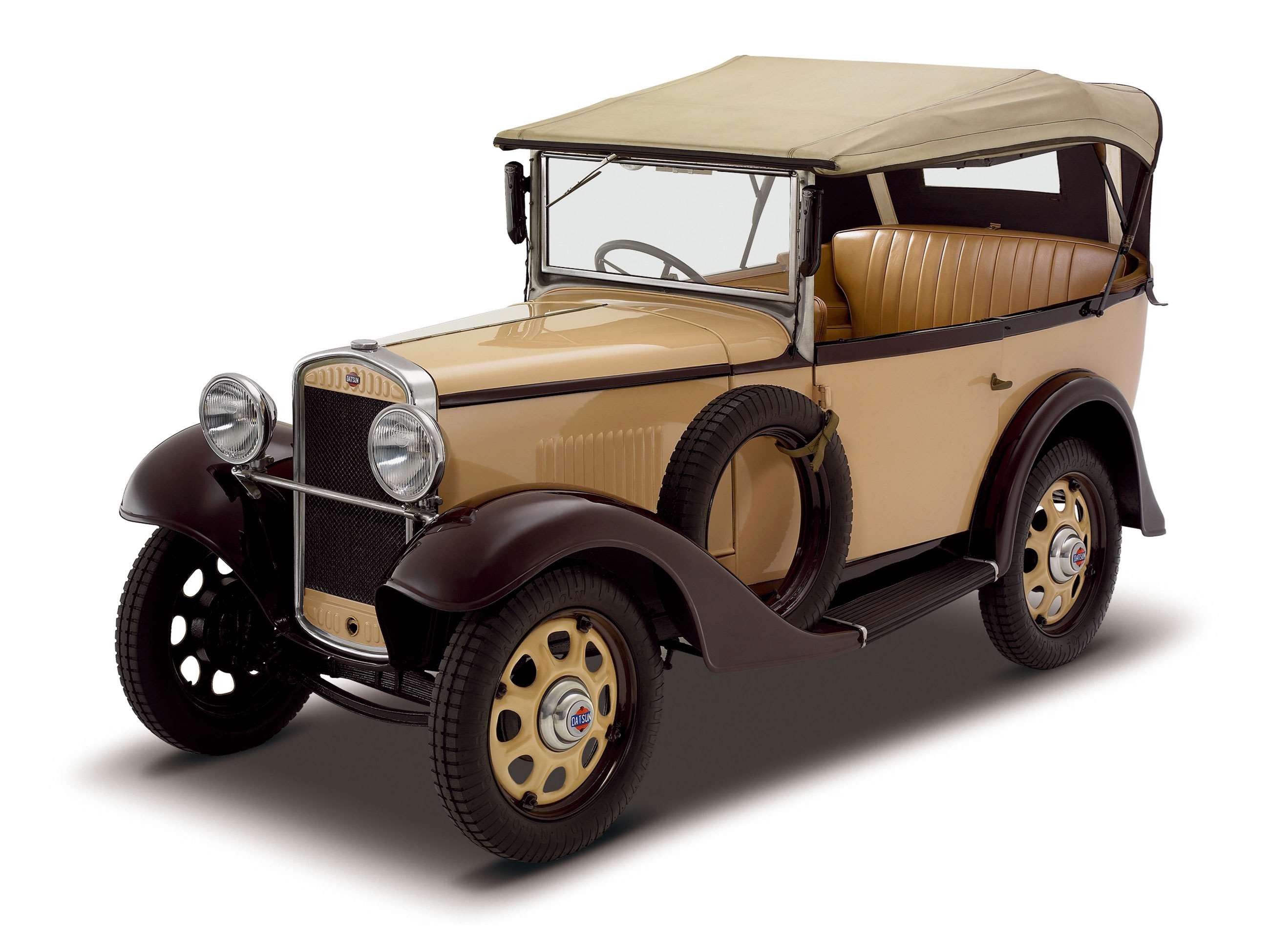 Datsun 11 Phaeton at Goodwood
Datsun 11 Phaeton at Goodwood
Datsun 11 Phaeton – 1932
The Datsun 11 Phaeton holds the distinction of being the first-ever Datsun passenger car. Introduced in 1932, approximately 150 units of the Type 11 were sold in various body styles during its single year of production. This inaugural Datsun car model bore a striking resemblance to the Austin Seven Ruby, sharing similar aesthetics, engine displacement, and dimensions. This similarity sparked controversy, with accusations that the Datsun 11 was a direct copy of the Austin, potentially without official licensing or approval from the British automotive giant.
Intriguingly, a paper presented in Tokyo by Austin’s chief engineer in 1929, titled ‘The British Light Car,’ provided detailed illustrations and explanations of the Austin Seven’s mechanical components. When the remarkably similar Datsun emerged in 1931, Sir Herbert Austin reportedly imported a Datsun to the UK for examination, concerned about potential patent infringements. Despite his concerns, Austin chose not to file a formal complaint. Interestingly, this early connection later fostered collaboration, with Austin licensing its A40 Somerset saloon (in 1953) and A50 Cambridge (in 1959) for production by Datsun in post-war Japan, demonstrating an unexpected positive outcome from the initial controversy surrounding the Datsun car’s design origins.
 Datsun Fairlady Sports 1000 SPL213 at Goodwood
Datsun Fairlady Sports 1000 SPL213 at Goodwood
Datsun Fairlady Sports 1000 (SPL213) – 1960
Despite its understated appearance, the Datsun Fairlady Sports 1000 SPL213 is a pivotal model, marking the beginning of Datsun’s – and later Nissan’s – long line of celebrated sports cars. This four-seater roadster, with its fiberglass body, was the first to bear the iconic ‘Fairlady’ badge in Japan, a name that continues to be used today for models like the Nissan 370Z.
The name ‘Fairlady’ is said to have been inspired by Nissan’s then-President, Mr. Katsuji Kawamata, after he was captivated by the musical ‘My Fair Lady’ during a trip to the United States. He envisioned the new Datsun car, like the musical, achieving enduring popularity. His vision materialized through nine generations of Fairlady sports models. The first Fairlady Sports utilized the chassis of the Datsun 1000 (PL210) saloon, itself based on the Austin A50 Cambridge, to create Japan’s first vehicle marketed as a ‘sports car’. Due to the complexities of its GRP body construction, production numbers of the original Fairlady Sports were limited, quickly giving way to a steel-bodied successor with enhanced power and easier manufacturing. Exports to North America began tentatively in early 1960, but initial sales were slow. Later in 1960, the Datsun Fairlady Sports received minor updates, increasing power output from 48PS to 55PS, with total production around 500 units, laying the foundation for future Datsun sports car successes.
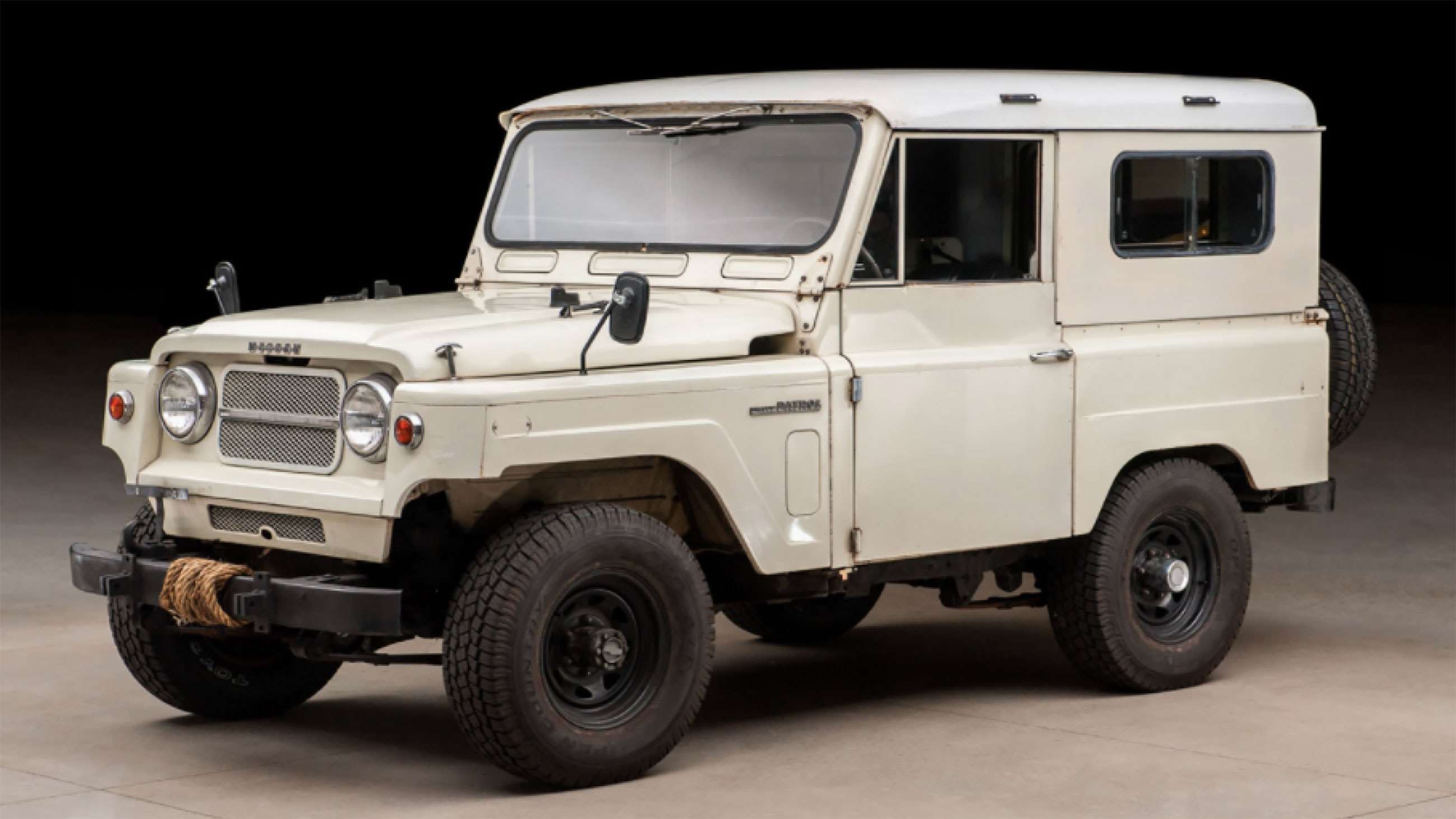 Datsun Patrol MK II 60 at Goodwood
Datsun Patrol MK II 60 at Goodwood
Datsun Patrol MK II (60) – 1960
In 1951, Datsun introduced its first genuine off-road 4×4 vehicle, the Patrol, as a robust response to the American Willys Jeep. This utilitarian Datsun car was compact yet rugged, powered by a 4.0-litre straight-six engine producing 125PS. The Patrol featured a sturdy ladder frame chassis and straightforward leaf spring suspension, offering selectable two-wheel-drive and four-wheel-drive modes.
The second-generation ‘60’ Patrol, launched in 1960, marked a significant step forward, establishing Datsun’s presence in crucial export markets like the United States and Australia. In the US, Datsun enlisted Roy Rogers, the famed ‘singing cowboy’ actor, to promote the then-unknown brand. Rogers became a spokesperson, featuring the Patrol 60 (along with a Datsun Pickup and Bluebird 210 Station Wagon) in low-budget television commercials, boosting Datsun car awareness. In Australia, Datsun’s marketing efforts were even more ambitious. A Patrol 60 was purportedly the first vehicle to traverse the Simpson Desert in Australia, although conflicting accounts suggest a Toyota Land Cruiser support vehicle may have arrived first. Regardless, the Patrol 60 proved to be a long-lasting model, produced from 1960 to 1980. Its successor, the third-generation Datsun Patrol (Nissan Safari in Japan), was more refined and became the first Patrol model sold in the UK and much of Europe, expanding the Datsun car’s global footprint.
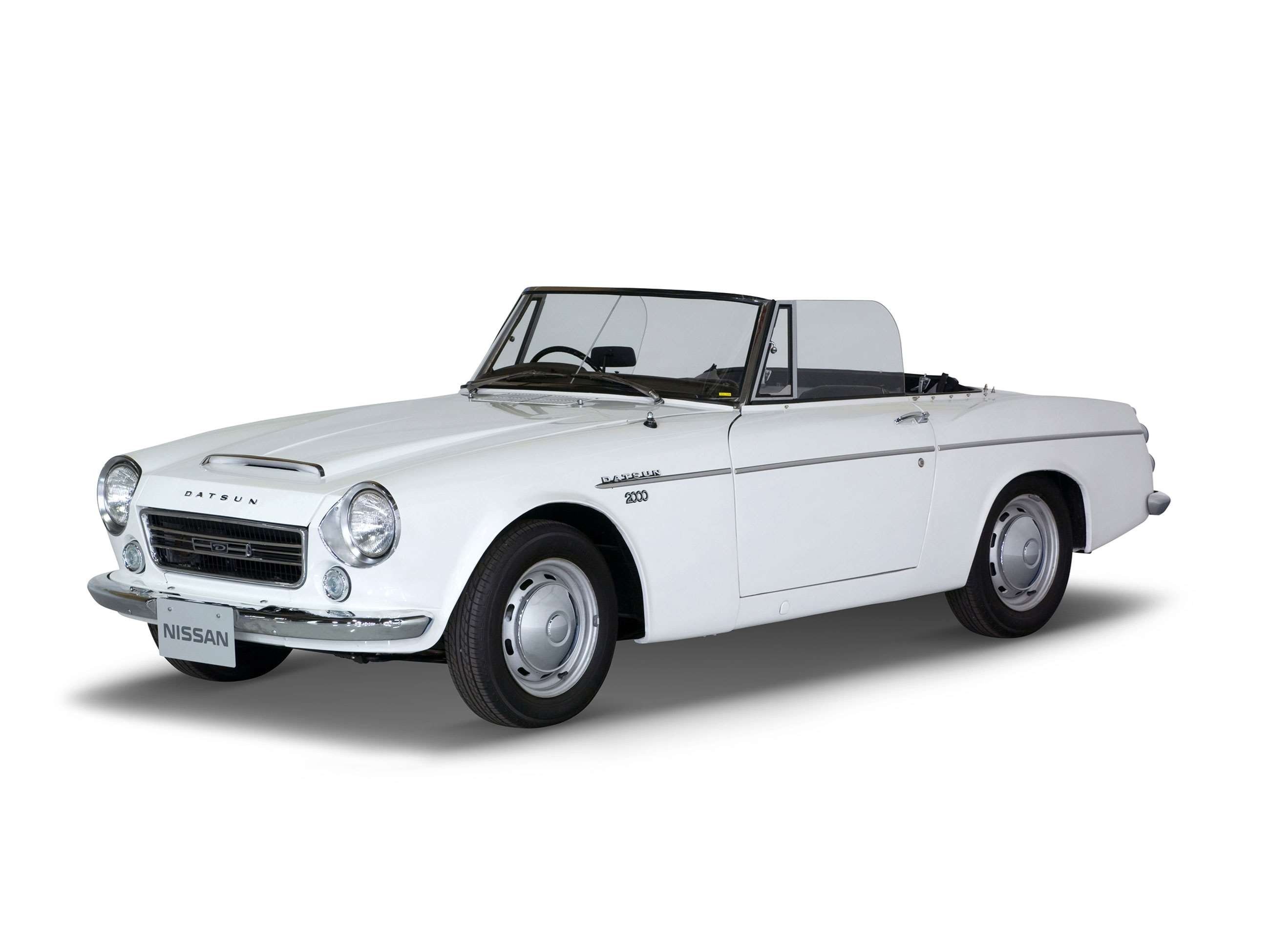 Datsun Fairlady 1500-2000 Roadster at Goodwood
Datsun Fairlady 1500-2000 Roadster at Goodwood
Datsun (Fairlady) 1500-2000 Roadster – 1962
Resembling a Japanese interpretation of the MGB, the second-generation Datsun two-seater roadster debuted in Japan in 1962 as the Fairlady 1500 SP310. It featured a 1.5-litre, 85PS engine and was built upon the platform of the Bluebird family saloon. This Datsun car evolved into the 1600 (SP311) in 1965 and the more powerful 2000 (SR311) in 1967, boasting 145PS and a top speed of 125mph (205km/h). At the time, this made it the fastest car in Nissan’s history.
With the Fairlady 2000 Roadster, Datsun truly began producing a ‘real’ sports car, significantly enhancing the brand’s image worldwide, especially in the crucial US market. The Fairlady achieved a class victory at the inaugural Japanese Grand Prix at Suzuka in 1963. By the late 1960s, the 2000 Roadster had captured the hearts of sports car enthusiasts globally, paving the way for its highly successful successor, the Datsun Fairlady Z, in 1969, cementing Datsun’s reputation in the sports car arena.
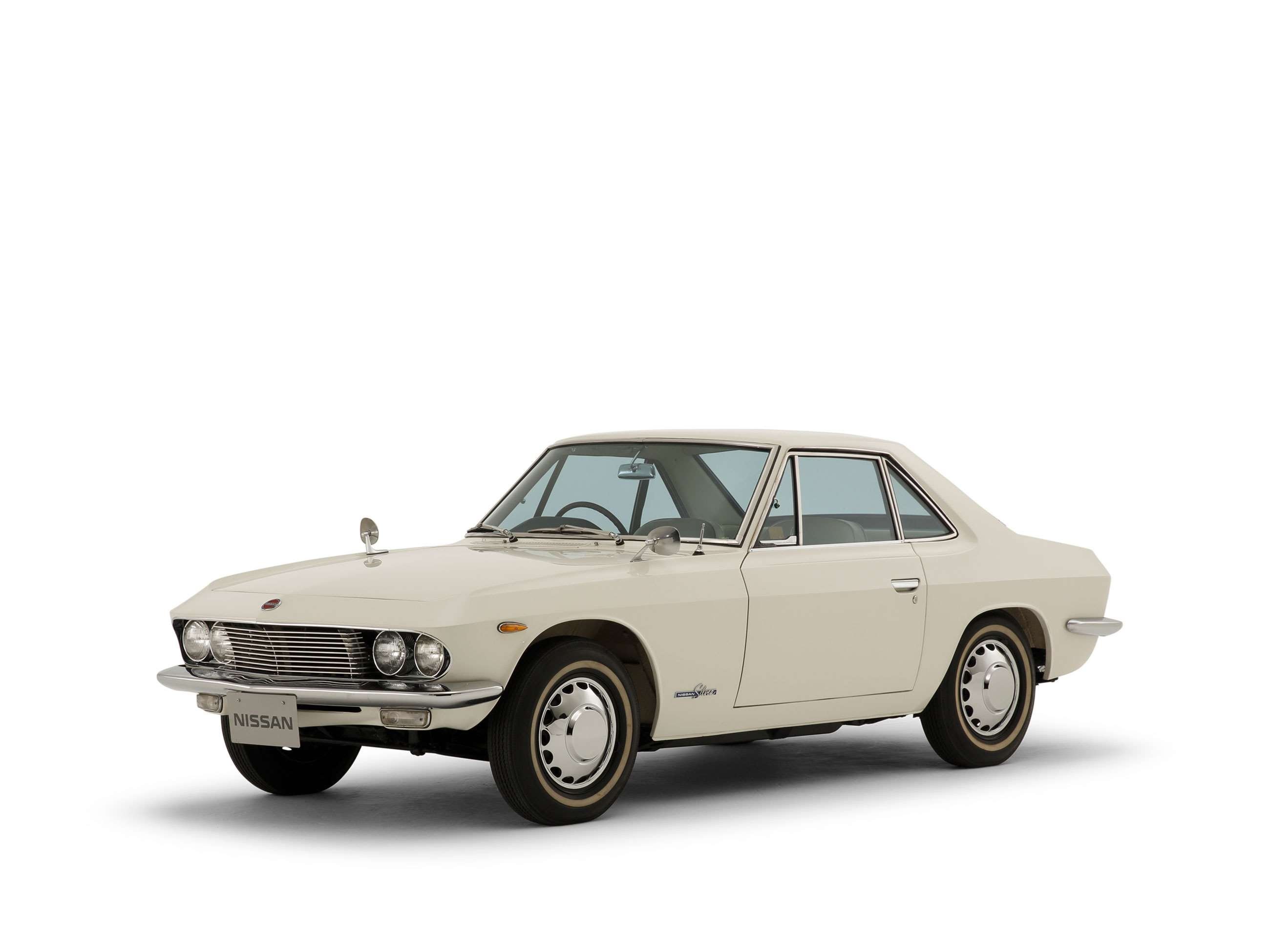 Datsun Silvia 1600 Coupe at Goodwood
Datsun Silvia 1600 Coupe at Goodwood
Datsun Silvia 1600 Coupe – 1965
The Datsun Silvia 1600 Coupe stands out as a design masterpiece, rivaling the elegance of contemporary Italian coupes like the Lancia Fulvia or Alfa Romeo Giulia GT. Interestingly, its styling was penned by German designer Count Albrecht Goertz, renowned for the iconic 1950s BMW 503 roadster.
While sold as a Nissan in Japan, the Silvia 1600 Coupe (CSP311) was marketed as a Datsun in limited export markets. Production was restricted to a mere three years, with only 554 examples crafted. Positioned above the Datsun Fairlady range, the Silvia was conceived as a high-performance ‘personal coupe’, sharing mechanical components with the Fairlady 1600. Its largely handmade construction contributed to its exclusivity and a high retail price of 1.2 million yen, almost double the price of the next model in Nissan’s Japanese lineup and exceeding even the flagship Cedric luxury saloon. After production ceased in 1968, the Silvia nameplate lay dormant until 1974, when it reappeared on the boldly styled Datsun 180SX-200SX ‘wedge’ coupe range, but the original Silvia 1600 Coupe remains arguably the most beautiful Datsun car ever created.
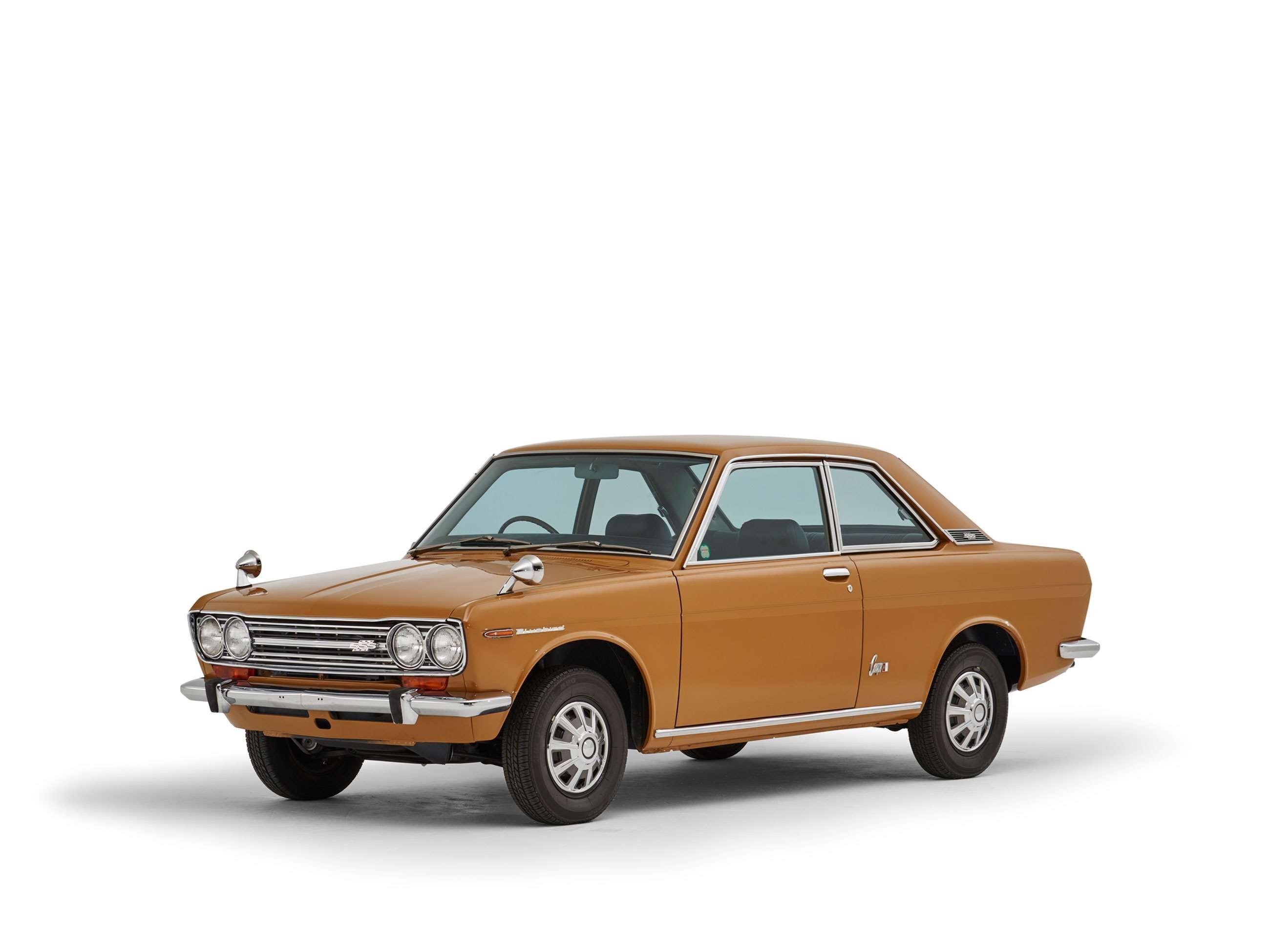 Datsun Bluebird 1600SSS Coupe KP510 at Goodwood
Datsun Bluebird 1600SSS Coupe KP510 at Goodwood
Datsun (Bluebird) 510, 1300-1600 – 1968
The Datsun Bluebird 1300-1600 saloon and estate range, along with its smaller sibling the Sunny 1000, were instrumental in launching the Datsun brand into the British and European new car markets in 1968. These sharply styled Datsun cars offered compelling value and generous equipment compared to established domestic rivals like the Ford Escort and Cortina, Vauxhall Viva, and Hillman Hunter. However, initial sales were modest as Datsun, and Japanese cars in general, were still relatively unknown and untested in the ‘buy British’ sentiment of the late 1960s.
In the United States, the Bluebird, marketed as the Datsun 510, found a more receptive audience. It quickly earned a reputation as a more affordable and sporty alternative to European models like the BMW 2002 or Alfa Romeo Giulia Berlina. The Datsun 510 boasted an advanced technical specification for its time, including a 97PS 1.6-litre OHC engine and four-wheel independent suspension. The Bluebird 510 achieved significant success in international motorsport, including an overall victory in the 18th East African Safari Rally in 1970. This motorsport success contributed to increased global sales, with over 1.5 million units sold in five years. In the US, the 510 became renowned for its competitiveness in the Trans Am Series under the 2,500cc class, with Datsun winning its class in 1971 and 1972. The 510 remains a popular choice in various SCCA amateur racing classes today. As a tribute to the 1967-73 Bluebird, Nissan unveiled the IDx Freeflow and IDx NISMO concepts in 2013, clearly drawing inspiration from the iconic Datsun 510.
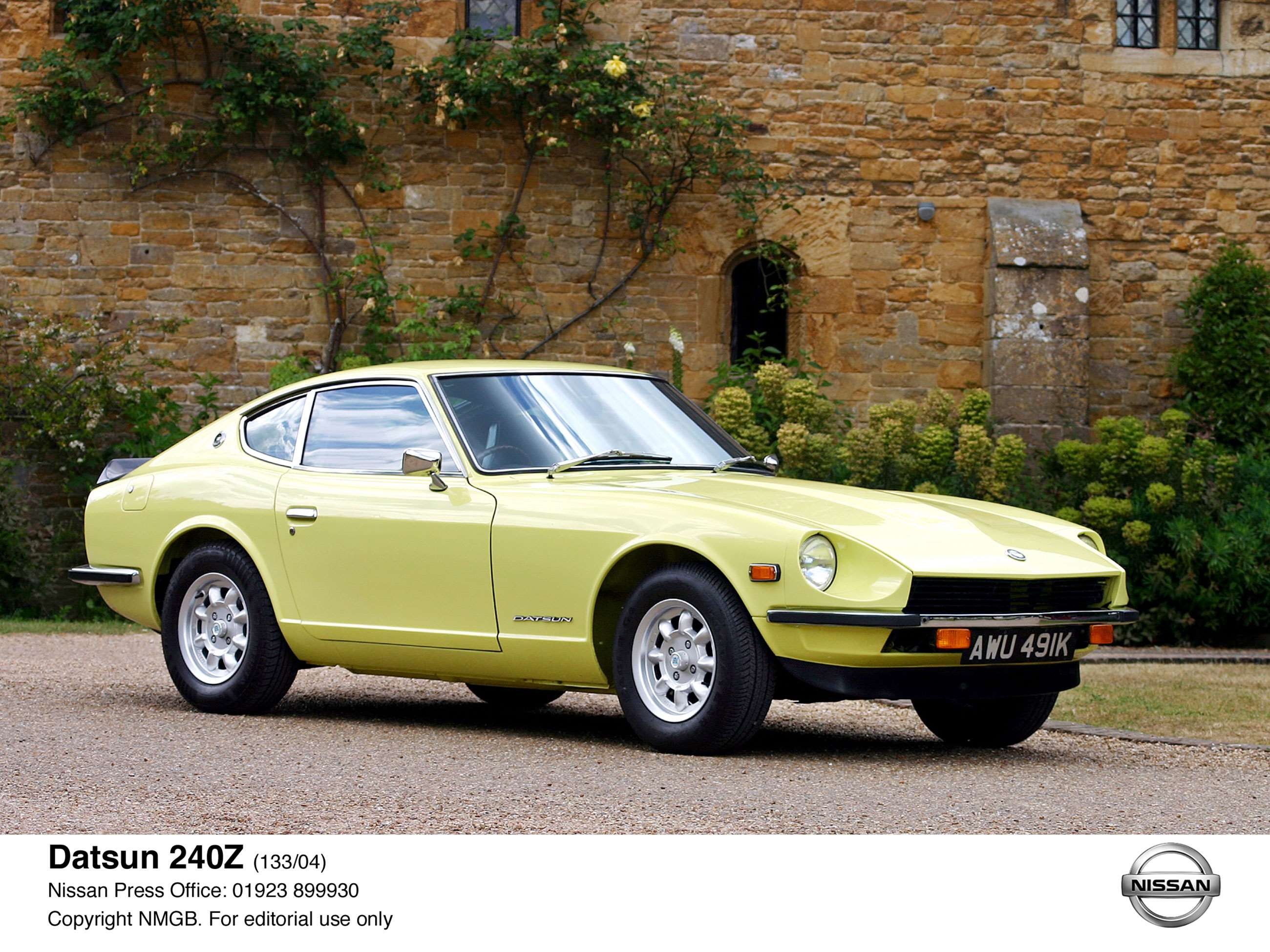 Datsun Fairlady 240Z at Goodwood
Datsun Fairlady 240Z at Goodwood
Datsun (Fairlady) 240Z – 1969
The Datsun Fairlady 240Z is arguably the most famous, iconic, and admired Datsun car of all time. This groundbreaking model, launched in 1969, ignited the Datsun/Nissan Z sports car legend that continues with the current Nissan 370Z. The first-generation Fairlady 240Z debuted in December 1969 and was immediately hailed as Datsun’s halo car, firmly establishing the Japanese brand as a serious global automotive player. This sporty two-seater Datsun became a massive market success, not just in Japan but particularly in North America and worldwide, selling over 520,000 units.
With its distinctive 2.4-litre straight-six engine sound, appealingly sleek design, spirited performance, exceptional value, and rally victories, the 240Z captivated the world. This Datsun car fundamentally transformed public perception of the brand. Initially developed with Yamaha’s collaboration, the 240Z evolved to include a less balanced 2+2 coupe, followed by the 260Z and 280Z (the latter not available in Europe). When replaced in 1978, the Datsun 280ZX became a more luxurious ‘boulevard cruiser’, catering to North American preferences. The sharper 300ZX followed in 1984, the last Fairlady Z model sold under the Datsun banner in some markets. Subsequent Z coupes, such as the 350Z and 370Z, have all been marketed as Nissans, but the 240Z remains the quintessential Datsun sports car.
 Datsun Cherry E10 at Goodwood
Datsun Cherry E10 at Goodwood
Datsun Cherry (E10) – 1971
The Datsun Cherry marked Nissan’s first foray into front-wheel-drive vehicles. This model initiated Datsun’s significant sales surge in Britain and Europe. UK sales jumped from just over 6,000 cars in 1971 to over 30,000 the following year. Despite the introduction of its F10 successor in 1974, the original Cherry’s popularity in the UK market was so strong that it remained on sale until 1977.
In the formative 1960s, Nissan strategically commissioned Pininfarina to design its mass-market Datsun saloons. The goal was to attract overseas buyers with attractive ‘Euro’ styled family cars like the second-generation Bluebird and Cedric. However, by the early 1970s, Datsun’s design direction shifted in-house, resulting in some stylistically questionable designs, exemplified by the somewhat awkward Cherry, particularly in its unusual 120A Coupe form. Despite its polarizing looks, the Cherry attracted buyers with its affordability, comprehensive standard equipment, and extended warranty. At a time when features like a radio and heated rear window were optional extras on competitors like the Austin 1100, Ford Escort, or Vauxhall Viva, these were included as standard on the Datsun Cherry. Even as the less appealing F10 Cherry successor struggled in the British market, the smaller 1.0-litre E10 Cherry continued to sell well until 1977. Vehicle tuners Janspeed even raced a Cherry with some success, boosting the image of this humble Datsun car model.
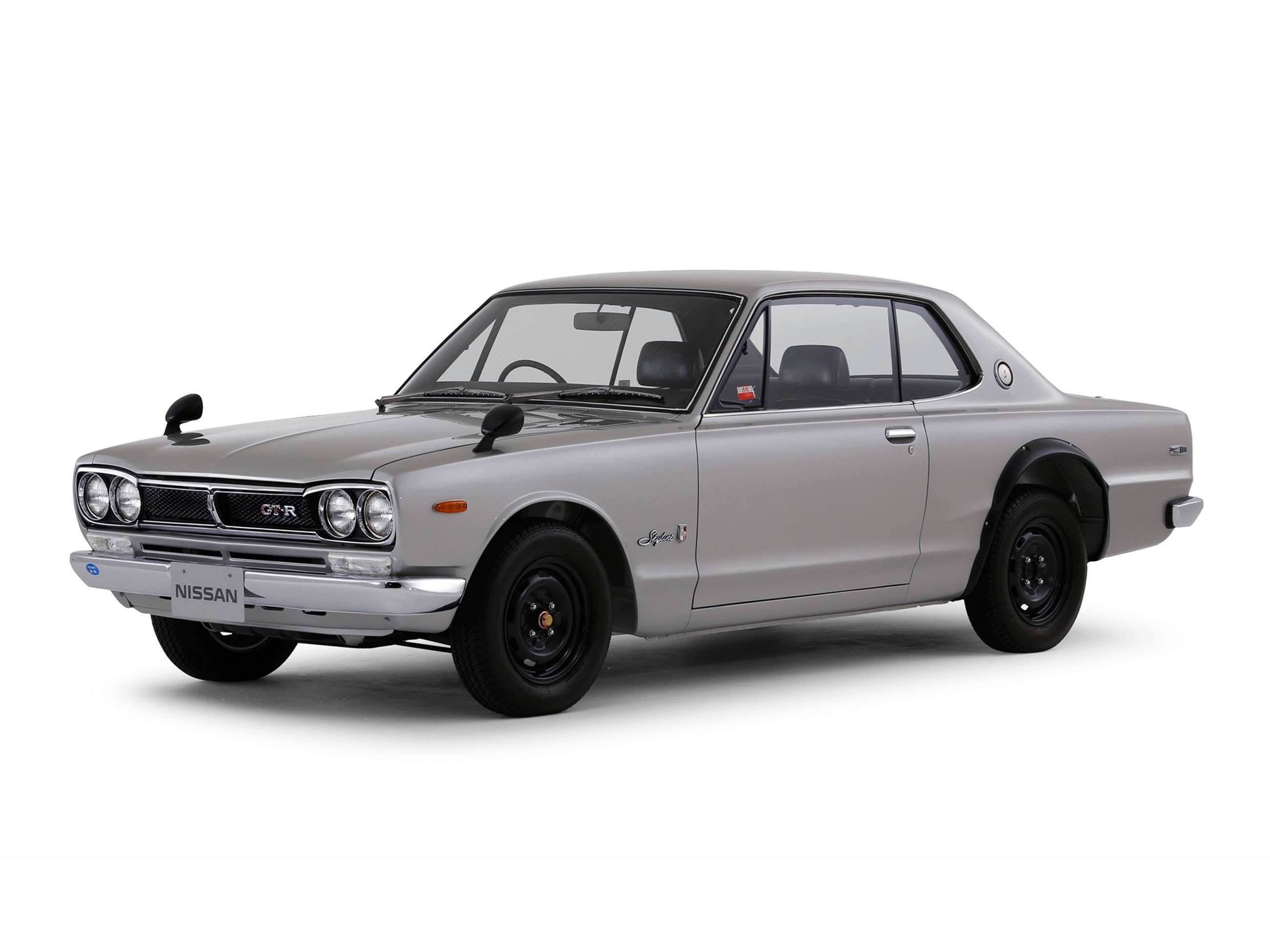 Datsun Skyline Hardtop 2000 GT-R KPGC10 at Goodwood
Datsun Skyline Hardtop 2000 GT-R KPGC10 at Goodwood
Datsun Skyline GT-R (C10) – 1971
In August 1966, Nissan Motor Company merged with Prince Motor Company, a former Japanese automotive rival. Prince was a respected Japanese brand known for its sporty and prestigious models, including the Skyline performance line, which began in 1957. The Skyline transitioned from Prince to Datsun (and Nissan) badging in 1968 when the Prince brand was discontinued, and the third-generation C10 Skyline models were introduced.
The Skyline C10 generation marked the debut of the first GT-R high-performance variant in 1969, initially as a four-door saloon. The now-iconic GT-R Coupe followed in early 1971. This 160PS 2.0-litre DOHC coupe introduced the flared wheel arches and quad circular taillights that have become signature design elements of all subsequent GT-R models, including the modern Nissan GT-R. Except for a few smaller export markets, the C10 GT-R was primarily reserved for the Japanese domestic market. Exports to the UK and mainland Europe began with the fourth-generation Datsun Skyline (C110) in late 1972, badged as the 240K GT. The ex-Datsun Skyline GT-R high-performance coupe has since become a globally recognized cult car, particularly popular among video game enthusiasts, solidifying the Datsun car’s place in performance automotive history.
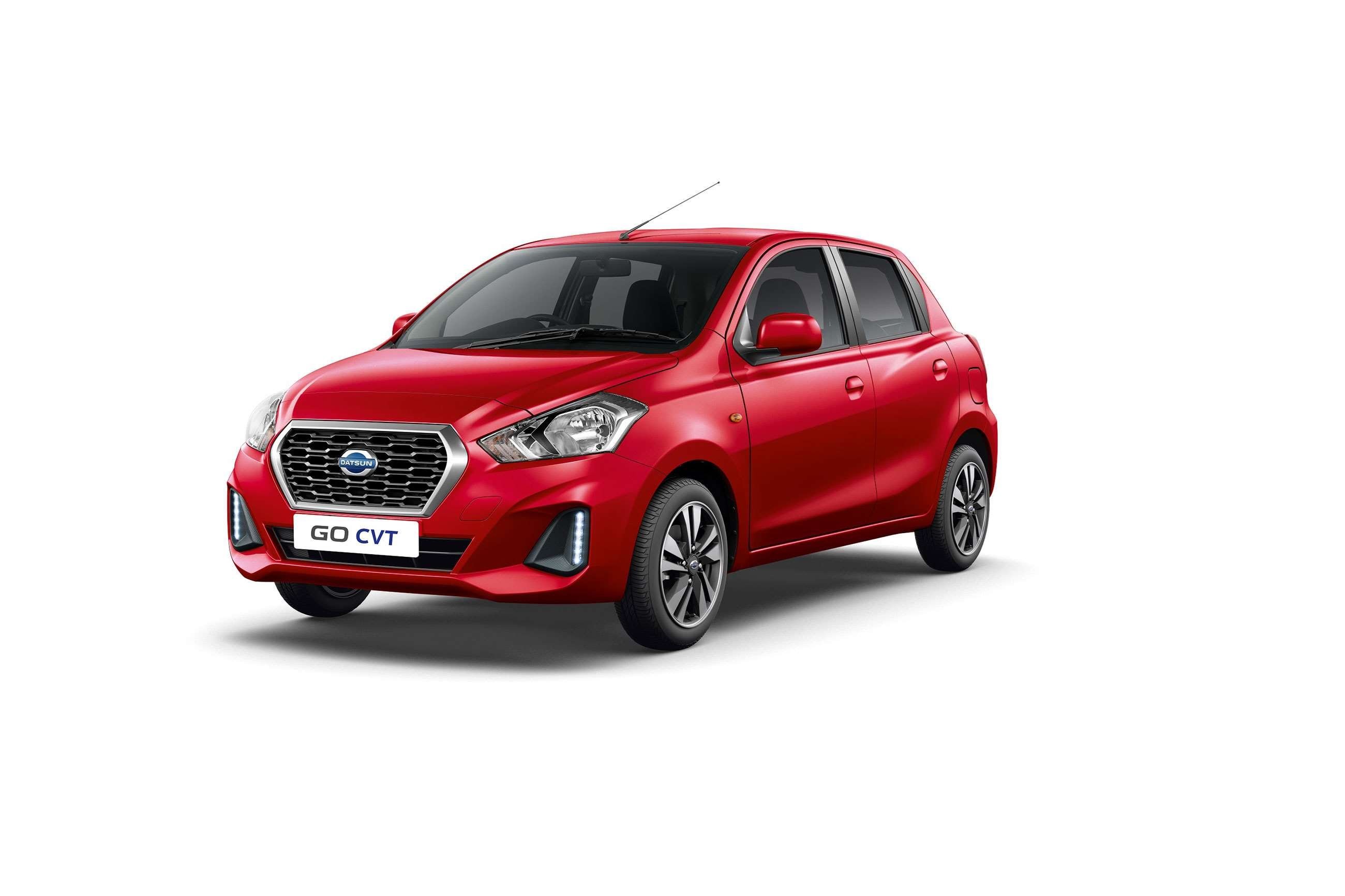 Datsun GO at Goodwood
Datsun GO at Goodwood
Datsun GO – 2013
After Nissan retired the Datsun brand in 1986, the name was revived in 2013 as a low-cost brand targeting emerging markets like India, Indonesia, South Africa, and Russia. The first ‘new-era’ Datsun car was the GO, a Fiesta-sized 1.2-litre hatchback sharing many components with the Nissan Micra, including its engine and interior elements.
The GO was soon joined by the Datsun GO+, a small family estate version, and later the Cross, a GO variant with crossover styling cues. Shortly after its 2013 launch, the Datsun GO underwent crash testing in India and received a zero safety rating from Global NCAP. The organization urged Nissan to either significantly re-engineer the GO or withdraw it from sale. Nissan did not publicly respond to these requests, yet Datsun sales in India continued. In addition to the GO-based models, Datsun also offered the on-DO saloon and mi-DO hatchback in Russia, both rebadged versions of the Lada Granta, through the Renault-Nissan Alliance’s partnership with VAZ Lada. While the Datsun GO represented a modern attempt to revive the brand’s affordable car ethos, it also highlighted the challenges of balancing cost-effectiveness with safety standards in the contemporary automotive market, ultimately leading to the brand’s further retraction from certain markets.
Conclusion:
The story of the Datsun car is a compelling journey through automotive history. From its early days as a challenger brand to its global successes and eventual rebranding, Datsun left an indelible mark. Whether through its iconic sports cars like the 240Z or its affordable and reliable models that gained popularity worldwide, Datsun cars resonated with generations of drivers. The brand’s revival in the 21st century, though ultimately short-lived in some markets, underscores the enduring appeal of the Datsun name and its legacy of innovation and value in the automotive world. Exploring these ten significant Datsun models offers a glimpse into a brand that continues to be remembered fondly by car enthusiasts and historians alike, a testament to the lasting impact of the Datsun car.
